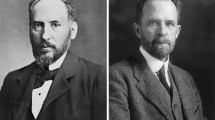Abstract
This Chapter describes a number of different scenarios and related experiments envisaged according to the various design principles for cognitive architectures. The primary approach taken into consideration was the biologically driven one, so the scenarios have been prepared at the aim to demonstrate how efficiently the insect brain computational model built succeeds in reproducing and enhancing the insect capabilities already addressed in Neurobiology.
Access this chapter
Tax calculation will be finalised at checkout
Purchases are for personal use only
Similar content being viewed by others
References
B.S. Minnery, S.T. Mueller, M. Jones, The bica cognitive decathlon: a test suite for biologically-inspired cognitive agents, in Internal Report (2007).
L.N. Long, S.D. Hanford, Evaluating cognitive architectures for intelligent and autonomous unmanned vehicles, in AAAI Workshop (2007).
P. Arena, L. Patané, P.S. Termini, A. Vitanza, and R. Strauss, Software/hardware issues in modelling insect brain architecture, in 4th International Conference on Intelligent Robotics and Applications (ICIRA) (2011).
P. Arena, M. Cosentino, L. Patané, A. Vitanza. Sparkrs4cs: a software/hardware framework for cognitive architectures, in 5th SPIE’s International Symposium on Microtechnologies, pp. 1–12 (2011).
P. Arena, L. Patané, M. Pollino, C. Ventura. Tribot: a hybrid robot for cognitive algorithm implementation. in 18th IEEE Workshop on Nonlinear Dynamics of Electronic Systems (NDES 2010), pp. 1–6 (2010).
K. Neuser, T. Triphan, M. Mronz, B. Poeck, R. Strauss, Analysis of a spatial orientation memory in drosophila. Nature 453, 1244–1247 (2008)
G. Liu, H. Seiler, A. Wen, T. Zars, K. Ito, R. Wolf, M. Heisenberg, L. Liu, Distinct memory traces for two visual features in the drosophila brain. Nature 439, 551–556 (2006)
R. Ernst, M. Heisenberg, The memory template in drosophila pattern vision at the flight simulator. Vision Res. 39, 3920–3933 (1999)
S. Tang, A. Guo, Choice behavior of drosophila facing contradictory visual cues. Science 294, 1543–1547 (1999)
L. Liu, R. Wolf, R. Ernst, M. Heisenberg, Context generalization in Drosophila visual learning requires the mushroom bodies. Nature 400, 753–756 (1999)
Author information
Authors and Affiliations
Corresponding author
Editor information
Editors and Affiliations
Rights and permissions
Copyright information
© 2014 Springer International Publishing Switzerland
About this chapter
Cite this chapter
Arena, P., Patanè, L. (2014). Experimental Scenarios. In: Arena, P., Patanè, L. (eds) Spatial Temporal Patterns for Action-Oriented Perception in Roving Robots II. Cognitive Systems Monographs, vol 21. Springer, Cham. https://doi.org/10.1007/978-3-319-02362-5_10
Download citation
DOI: https://doi.org/10.1007/978-3-319-02362-5_10
Published:
Publisher Name: Springer, Cham
Print ISBN: 978-3-319-02361-8
Online ISBN: 978-3-319-02362-5
eBook Packages: EngineeringEngineering (R0)




